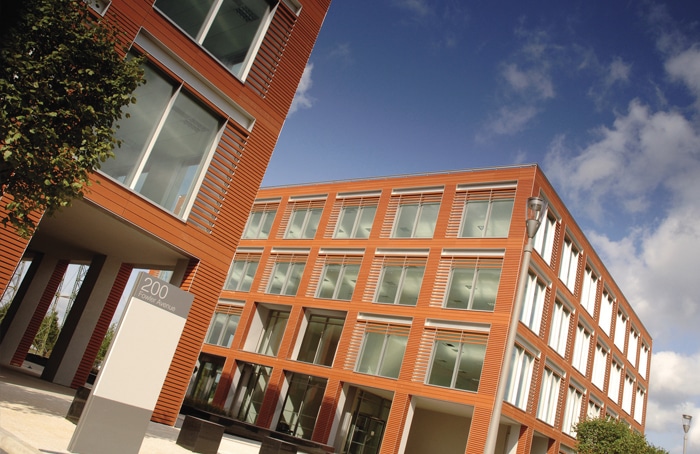 Office output contracted by 8.7 per cent in 2012, and market conditions over the next 18 months are expected to remain tough. As the economy improves offices should benefit from a significant increase in demand and a recovery is likely from 2015 onwards. Where the growth will occur is uncertain given the structural changes that have taken place in recent times, and the medium-term outlook could provide impetus for intervention by the government. Kallum Pickering from Construction Products Association considers the office market of the future.
Office output contracted by 8.7 per cent in 2012, and market conditions over the next 18 months are expected to remain tough. As the economy improves offices should benefit from a significant increase in demand and a recovery is likely from 2015 onwards. Where the growth will occur is uncertain given the structural changes that have taken place in recent times, and the medium-term outlook could provide impetus for intervention by the government. Kallum Pickering from Construction Products Association considers the office market of the future.
In the run up to the financial crisis, UK city skylines were transformed as business migrated away from the traditional centres in London and the South East. Large projects such as Bridgewater Place in Leeds, West Tower in Liverpool, and 10 Holloway Circus in Birmingham stand testament to the unprecedented growth that took place around the country. Still, London enjoyed its fair share of the pie: Heron Tower had its first bricks laid during this time. The rate of UK output growth skyrocketed, from a modest 3.3 per cent in 2005, to an impressive 20.4 per cent in 2007.
By 2008 the office market started to slow, and contracted 3.8 per cent over the year. By 2009 sector output was plummeting at an annual rate of 36.2 per cent and regional disparities that had defined the market in the Thatcher era started to return. Since 2009 rental prices in the capital have reached new heights, whilst floor space in the second, third and fourth largest cities has emptied.
This year even the London market experienced a slowdown in activity, but still a few large projects remain. BAM Construct recently clinched the bid for Google’s new £300 million HQ, as part of the Kings Cross redevelopment. The one million square foot project should be complete by 2016. Goldman Sachs also received planning approval for a 1.2 million square foot HQ on the site of the old telephone exchange fronting Shoe Lane. So long as London remains
a global epicentre for finance and services, foreign direct investment from large multinationals should provide a steady work stream, at least enough to maintain moderate levels of activity. This is what we have seen since the crisis: despite a global slowdown, demand for London office space has remained. As a recovery in domestic and EU demand occurs the national market should see positive rates of growth return. It is uncertain however, how much will be focused in the South East and how much will spill over into weaker regional markets.
Going forward, the problem of excess supply in the regional markets must be addressed. Vacancy rates in London of 6.1 per cent are dwarfed by markets such as Birmingham where vacancy rates are 16.1 per cent. Can the outward migration patterns that took place before the crisis enter reverse gear during the recovery phase? Furthermore, will this progression occur naturally or might some intervention be required?
It will be interesting to see how effective the easing of planning laws (which enable vacant office conversion into residential or retail) are at raising demand. Increased demand might absorb some of the excess supply in regional markets, but available floor space in London could fall further, exacerbating the problem of price inflation. Over the medium term, more intervention seems likely.
With so many factors at play, the office market could take a number of roads in the coming years. A recovery is expected but is unlikely to gather pace until late next year. The Association forecasts a contraction of four per cent in 2013, a broadly flat 2014, and from 2015 onwards annual growth of upwards of six per cent.


